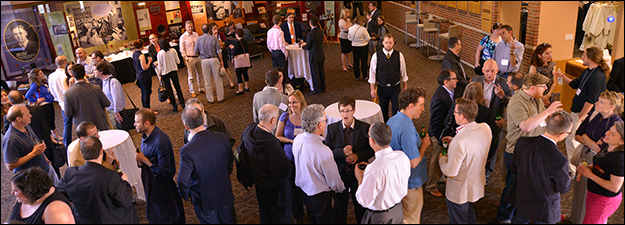Chaucer, Saint Augustine, and Clerical Practice in the English Middle Ages: "Pronuntiatio and Its Effect on Chaucer's Audience" Once More
Sponsoring Organization(s)
Centre for the Study of Christianity and Culture, Univ. of York
Organizer Name
Dee Dyas
Organizer Affiliation
Centre for the Study of Christianity and Culture, Univ. of York
Presider Name
Dee Dyas
Paper Title 1
From Augustine to Monastic Refectories to the Schools to Chaucer: Pronuntiatio and the Oral-Aural "Sociable Text"
Presenter 1 Name
D. Thomas Hanks, Jr.
Presenter 1 Affiliation
Baylor Univ.
Paper Title 2
Criseyde Speaks
Presenter 2 Name
Dorsey Armstrong
Presenter 2 Affiliation
Purdue Univ.
Paper Title 3
Thomas Usk a.k.a "Chaucer" and the Denial of Pronuntiatio: The Erotic/Political Performance of Self/Text
Presenter 3 Name
William A. Quinn
Presenter 3 Affiliation
Univ. of Arkansas-Fayetteville
Start Date
17-5-2015 8:30 AM
Session Location
Schneider 1130
Description
In Book II of the de Doctrina Christiana, and again in Book IV, Augustine of Hippo asserts the importance of properly interpreting material one is reading aloud. His concept of “interpretation” in Book II is solely a matter of the importance of pauses and of discerning the structure of material written to be read. In Book IV, however, he discusses what one might call rhetorically-based oral-aural interpretation. His guidance, along with the pseudo-Ciceronian work The Rhetorica ad Herennium and, eventually, Geoffrey of Vinsauf’s Documentum de Modo et Arte Dictandi et Versificandi, came to shape the mode of orally delivering written material to listening audiences—which means most audiences—in the Middle Ages. Chaucer knew the rhetorical guidance available to him, and naturally used that guidance as he read his work aloud. The host of other readers-aloud would either have the guidance of Chaucer himself, or of the works listed above, to guide them in their turn as they read Chaucer’s poetry aloud to audiences varied in nature but all listening—not only an audience but audiens.
Dee Dyas
Chaucer, Saint Augustine, and Clerical Practice in the English Middle Ages: "Pronuntiatio and Its Effect on Chaucer's Audience" Once More
Schneider 1130
In Book II of the de Doctrina Christiana, and again in Book IV, Augustine of Hippo asserts the importance of properly interpreting material one is reading aloud. His concept of “interpretation” in Book II is solely a matter of the importance of pauses and of discerning the structure of material written to be read. In Book IV, however, he discusses what one might call rhetorically-based oral-aural interpretation. His guidance, along with the pseudo-Ciceronian work The Rhetorica ad Herennium and, eventually, Geoffrey of Vinsauf’s Documentum de Modo et Arte Dictandi et Versificandi, came to shape the mode of orally delivering written material to listening audiences—which means most audiences—in the Middle Ages. Chaucer knew the rhetorical guidance available to him, and naturally used that guidance as he read his work aloud. The host of other readers-aloud would either have the guidance of Chaucer himself, or of the works listed above, to guide them in their turn as they read Chaucer’s poetry aloud to audiences varied in nature but all listening—not only an audience but audiens.
Dee Dyas

